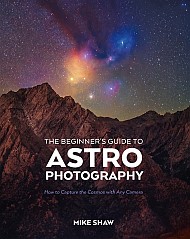Astronomy
Astronomers Observe a Black Hole in Another Galaxy Tearing a Star Apart
New study reveals, for the first time, a tidal disruption event (TDE), where a black hole tears apart a star, occurring outside the center of a galaxy that produced exceptionally strong and rapidly evolving radio signals. This rare discovery shows that supermassive black holes can exist and remain active far from galactic cores, challenging current understanding of where such black holes reside and how they behave. The event’s delayed and powerful radio outbursts also suggest previously unknown processes in how black holes eject material over time.
Study Suggests COVID Pandemic May Have Aged Everyone’s Brain
Immunologist Zachary Rubin explains how, according to a recent study, living through a pandemic might accelerate brain aging.
LIVE VIEWS OF THE MOON / SEESTAR S50
It Looks Like All Mini-Neptunes Aren't Magma Oceans After All
There are no mini-Neptunes in our Solar System, yet they seem to be one of the most common types of exoplanets out there. Previous research shows that these planets are magma oceans. But new research based on JWST data shows that many of them may actually have solid surfaces.
Two Vaquita Calves Offer Flicker of Hope for Most Endangered Porpoises on Earth
The latest report shows that the estimated number of endangered vaquita porpoises has modestly increased
AI Decodes Visual Brain Activity—And Writes Captions for It
A noninvasive imaging technique can translate scenes in your head into sentences. It could help to reveal how the brain interprets the world
A three-legged lion has learned to hunt in a completely unexpected way
A three-legged lion has learned to hunt in a completely unexpected way
An Opera Explores the Story of Rosalind Franklin and the Discovery of DNA
Betrayal, ambition and the double helix: turning Rosalind Franklin’s story and the discovery of the structure of DNA into an opera
Digital map lets you explore the Roman Empire's vast road network
Digital map lets you explore the Roman Empire's vast road network
Ancient Roman Roads Mapped in Detail from Great Britain to North Africa
New findings increase the known length of the Roman Empire’s road network by more than 60,000 miles
S&T Test Report: The ZWO Seestar S30 Telescope
This pintsized powerhouse takes images of the night sky that will surprise even seasoned astrophotographers.
The post S&T Test Report: The ZWO Seestar S30 Telescope appeared first on Sky & Telescope.
Black Hole ‘Superflare’ Is the Strongest Ever Seen
A “superflare” 10 trillion times brighter than the sun is confirmed as the record holder for luminosity
Alarm Grows over Proposed Giant Mirrors in Orbit and Other Commercial Space Plans
Reflect Orbital’s plan to deliver “sunlight on demand” using thousands of giant orbital mirrors is just the latest in a growing list of disruptive commercial activities in space
Ozempic and Wegovy May Slow Alcohol Absorption and Intoxication
A small study helps explain why some people taking Wegovy and similar weight-loss drugs cut back on alcohol, offering insight into potential new addiction therapies


